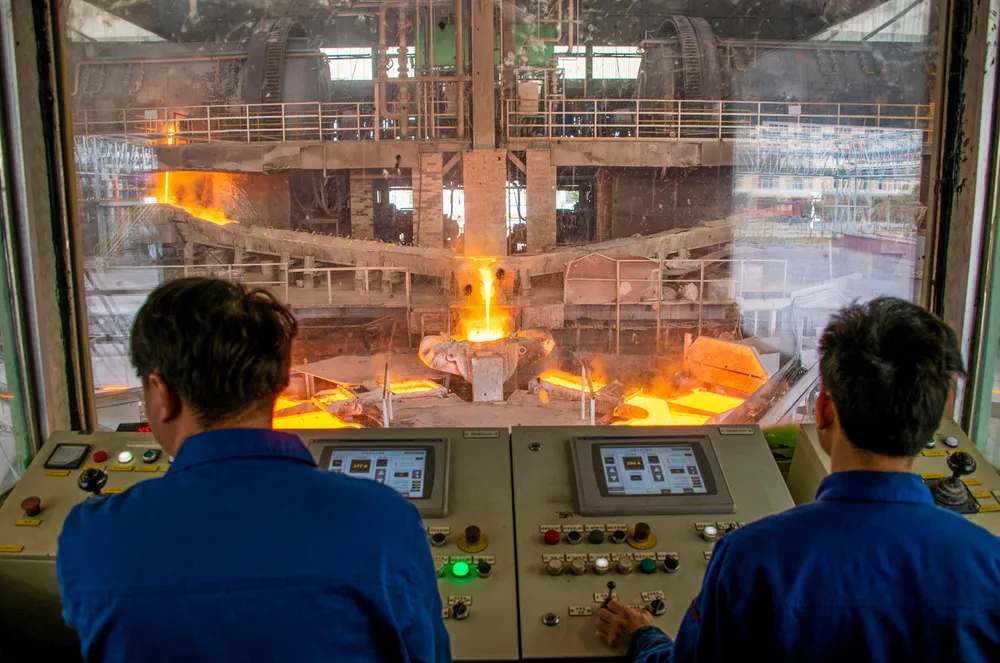Ditching Chinese critical minerals means 'much slower energy transition,' warns WoodMac
US and EU have been pushing to develop their own critical mineral supply chains to boost energy security, but new report calls for economic 'pragmatism' in face of geopolitical concerns

Protectionist measures by governments to ditch Chinese critical minerals including copper due to energy security concerns fly in the face of market economics and risk severely delaying the energy transition, warns Wood Mackenzie.
China currently dominates the mining of copper – demand for which is expected to grow 75% by 2050 partly due to its importance in electrification – as well as its downstream processing and semi-manufacturing.
Western economies are working to bolster their critical mineral supply chains due to fears of overdependence on China, which supplies 90% of rare earths globally but has been known to restrict exports of critical minerals to exert geopolitical pressure.
But a new report by energy consultancy WoodMac has warned that protectionist measures aiming to secure raw materials for geopolitical reasons “ignore the complexities and current efficiencies of copper market supply chains.”
The move by the US and EU to develop their own potentially higher-cost production capacity “swims against the tide of market economics,” said WoodMac, arguing that “pragmatism must hold sway.”
A scenario without China for the copper supply chain would require a “substantial increase in processing capacity to meet energy transition targets,” said WoodMac global mining research director Nick Pickens.
“Based on our projections, there will be an additional 8.6 million tonnes of copper demand outside China over the next decade,” he said.
“This demand represents 70% of smelter capability and 55% of fabricator capacity in the rest of the world. As governments and manufacturers aim to diversify away from China, it is crucial to consider the entire supply chain, not just mining operations.”
Nearly $85bn in new smelting and refining capability would be needed to displace Chinese supply, said WoodMac.
The global copper supply chain is made up of four key stages: mining, smelting and refining, semi-fabricating and manufacturing of finished goods.
Copper is predominantly mined in the Americas and Africa before heading for downstream processing and manufacturing, predominantly in China.
WoodMac said China’s “substantial investments" in the downstream processing and semi-manufacturing sectors "present significant challenges to global copper supply security.”
Since 2000, China has accounted for 75% of global smelter capacity growth and currently controls 97% of global smelting and refining capacity, said WoodMac, contributing over three million tonnes of production and nearly $25bn in investment.
Semi-fabricators outside of China, especially in Europe, are facing challenges due to lower utilisation and higher operating costs, said Pickens.
The EU’s Critical Raw Materials Act, which came into force this year, states that no more than 65% of the EU’s demand for any critical mineral should come from a single third country by 2030.
The US introduced a critical mineral strategy in 2017 that WoodMac said has not yet succeeded in reclaiming material market share in the copper supply chain. It added that incentives such as the Inflation Reduction Act “may not ensure the long-term sustainability of the industry.”
“While copper supply risks can be mitigated and some rebalancing has begun in various countries, the scale of China’s dominance in the supply chain means complete replacement is unfeasible,” said Pickens.
WoodMac said that the “rhetoric about replacing Chinese supply will continue, but governments and manufacturers must not overlook the scale of the task.”
“Unless there is a seismic shift in the rate and efficiency at which the rest of the world deploys capital and operates,” it said that decoupling from China completely will mean a “more expensive and much slower energy transition.”
(Copyright)